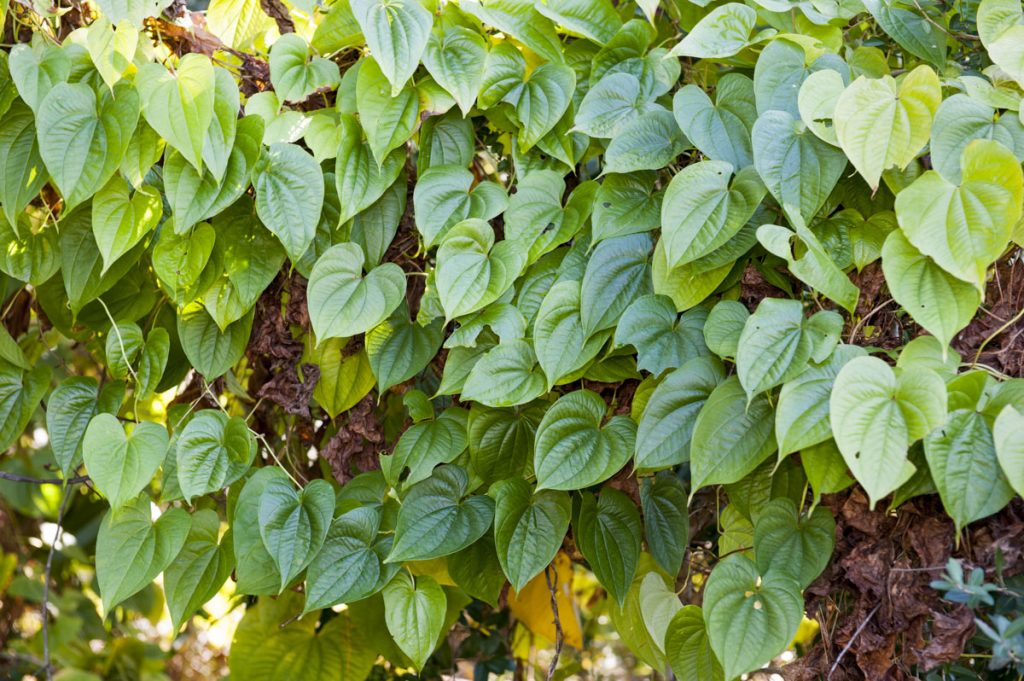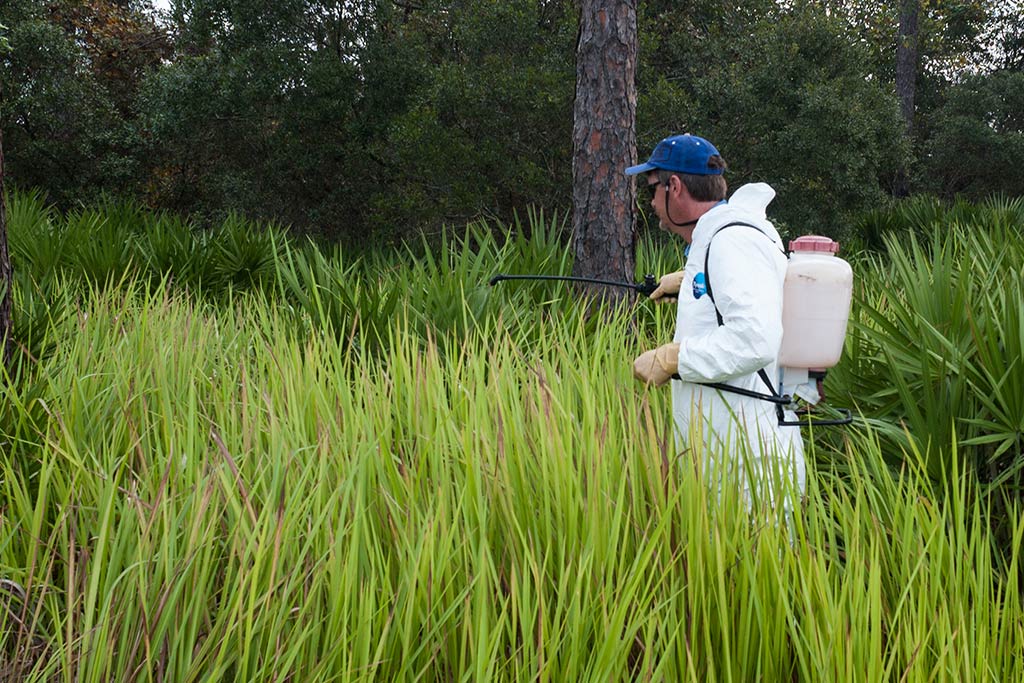Florida’s warm, sunny climate draws more than just tourists. Exotic, nonnative plants cover thousands of acres of the state’s forests, wetlands and waterways. Invasive plants share several characteristics. They grow quickly, propagate easily, resist native pests and were introduced to the state without the diseases, parasites and other natural enemies that would help control their growth in their natural settings.
Information about the equipment
The district uses a variety of equipment to access remote areas. Some examples of this equipment are four-wheel drive pickup trucks with spray rigs mounted in the back, airboats, all-terrain vehicles, full-track machines and kicker boats, to name a few.
The St. Johns River Water Management District’s Invasive Plant Management Program is charged with controlling nuisance upland and aquatic vegetation on approximately 400,000 acres of district-owned properties. As a contractor for the Florida Fish and Wildlife Conservation Commission (FWC), the district also maintains control of nuisance aquatic vegetation in eight public lakes and rivers.
Two of the district’s core missions are to protect surface water resources and prevent increases in flooding, and operate and maintain the district’s regional flood control projects. Fulfilling these duties would be nearly impossible if invasive aquatic plants, such as hydrilla (Hydrilla verticillata), were left unchecked. These prolific plants can quickly overrun a water body and block water control structures.
Hydrilla can also reproduce through fragmentation. This means that small amounts of hydrilla on boat trailers, bait buckets, draglines and from aquariums can spread the plant from place to place.
Two invasive plants, old world climbing fern (Lygodium mycrophyllum) and Carolina willow (Salix caroliniana) trees pose particular problems on district lands.
Old world climbing fern, native to parts of Asia, Australia and Africa, climbs up trees and into forest canopies, blocking sunlight needed by native trees and shrubs, thus weakening or killing them and their understory plants. This invasive plant spreads aggressively — it produces about 15,000 spores per cubic meter of fertile leaf area, and the spores are widely dispersed by the wind, especially during storm events.
While Carolina willows are native to the Southeastern United States, they are also an especially aggressive and prolific woody species that, under certain circumstances, is taking over wide areas of herbaceous marsh in the district. In these areas, the willows diminish biological diversity, hamper land management and restoration activities and alter the natural flow of water.
The Invasive Plant Management Program is the first line of defense in the battle for maintaining control of nuisance aquatic vegetation and providing flood protection, navigation, recreation and water quality and for controlling nuisance upland vegetation to protect plant and animal communities.
Invasive, nonnative plants can and do invade Florida’s forests and wetlands. These marauders often choke out native plant species and form exotic monocultures (an environment where a single species dominates an area). Hydrilla can grow an inch a day until it nears the water’s surface. The pesky plant then branches out to form thick mats across the water’s surface, effectively blocking out sunlight necessary for the survival of native submersed vegetation.
In many cases, these stands of exotic plants are not useful to the state’s wildlife, which have evolved to depend on native plants for food and shelter. Native animals rarely adapt to nonnative plants. Should exotic plants replace too many of Florida’s native plants, wildlife that remain dependent on native plants will move away or even perish.
The Invasive Plant Management Program is focused on bringing invasive, nonindigenous (exotic) aquatic and terrestrial weeds under what is called maintenance control. Noxious aquatic plants are those with the potential to hinder the growth of beneficial plants, to interfere with flood control, irrigation or navigation, or to adversely affect the public welfare or the natural resources of the state.
Maintenance control is a method of controlling exotic plants on a continual basis to maintain the plant population at the lowest feasible level. The district primarily achieves this through the use of approved herbicides.
The majority of invasive aquatic plant management is executed by an airboat equipped with motorized spray pumps. For upland terrestrial invasives, district staff use three-gallon backpack sprayers or all-terrain vehicles equipped with 15- to 30-gallon spray tanks. Large-scale treatments (100 acres or more) require the use of a helicopter contractor.
Most old world climbing fern on district lands occurs in places where ground application with backpack sprayers or tanks mounted on all-terrain vehicles is nearly impossible. While ground applications are necessary for optimal control, the district focuses on treating areas every other year, such as by helicopter, to reduce the degree of infestation. The district will also treat to perimeters that retard or stop the spread of old world climbing fern into higher quality natural areas. The district’s goal is to treat about 7,500 acres per year.
The U.S. Environmental Protection Agency (EPA), the Florida Department of Agriculture and Consumer Sciences (FDACS) and FWC control the use of herbicides in Florida’s waters. However, any chemical can be dangerous when used improperly. The state of Florida prohibits the use of herbicides that have not been specifically tested and approved for use in water. This approval must be printed on the herbicide label.
The district’s Invasive Plant Management Program is even more restrictive in that a determination is made for each site and for each plant species targeted for control as to which herbicide will be permitted for use. The herbicides permitted are those that have been determined to have the least potential for adverse effects on the public health, safety and welfare as well as on fish, wildlife and the environment.
More information about Florida’s invasive plants
Top 10 invasive plants in the district
- Hydrilla
- Water hyacinth
- Water lettuce
- Chinese tallow
- Japanese and old world climbing ferns
- Cogon grass
- Brazilian pepper
- Tropical soda apple
- Torpedo grass
- Air potato



